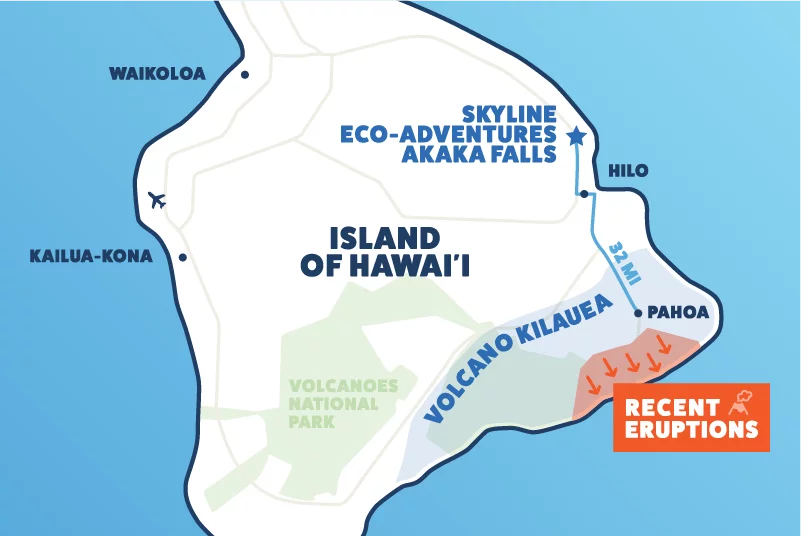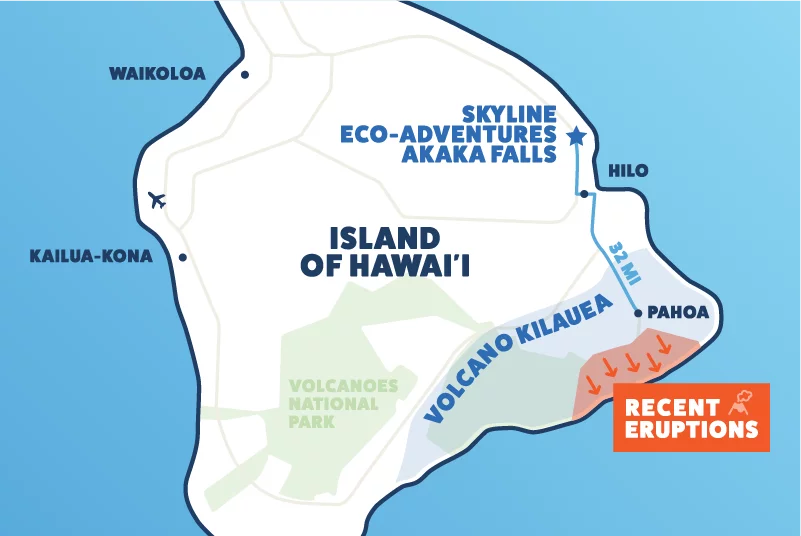Big Island’s Volcanic Eruption & Its Effect on Us

Eruption cycles are interesting because most of them are not just one and done events. They can last from mere hours to upwards of thousands of years depending on the volcano’s conditions. The worldwide median eruption duration is about seven weeks. Kilauea’s current eruption cycle started in 1983 and is still going on today, and is called Pu’u ‘O’o. Before this eruption cycle, the previously longest lasting eruption started on May 24, 1969, and lasted for 867 days, or almost two and a half years.
There are two separate volcanoes that are considered active on Big Island. They are Kilauea, which is 4,091 feet tall, and Hualalai, which is 8,271 feet tall. All throughout Kilauea’s history, there have been eruptions at the summit of the volcano and also at the vents along the East Rift Zone. The first recorded eruption of Kilauea happened in 1790. After this, there were continuous lava flows coming from the volcano, but the next major eruption event didn’t happen until 1924.
Kilauea is huge and it grows a little bit more every day because of lava flowing out and hardening, thereby extending the land mass of the island. This volcano makes up about 14% of the landmass on Big Island in Hawaii.  So what triggered this year’s large eruption event on Big Island? A 5.0 magnitude earthquake on the Richter Scale hit the island. The epicenter of this quake was the Kilauea volcano. It was caused by the movement of lava within the volcano itself and then rockfalls happened in the volcano’s crater along the East RIft Zone. As rocks moved and shifted in the crater, it allowed a lot of lava to spew out of the unstable areas of the volcano.
So what triggered this year’s large eruption event on Big Island? A 5.0 magnitude earthquake on the Richter Scale hit the island. The epicenter of this quake was the Kilauea volcano. It was caused by the movement of lava within the volcano itself and then rockfalls happened in the volcano’s crater along the East RIft Zone. As rocks moved and shifted in the crater, it allowed a lot of lava to spew out of the unstable areas of the volcano.
The biggest concerns that came from the large eruption event in May were the sulfur dioxide levels, wind shifts, and extremely hot lava. The lava has destroyed over 700 homes in the Pahoa area of Big Island.
A 5.0 magnitude earthquake is right in the middle of the Richter Scale which is measured from one through ten. Earthquakes aren’t anything new in Hawaii, in fact, Hawaii has the most earthquakes out of any state in the United States, with thousands of quakes happening every year. So many earthquakes happen here because the ground is so unstable due to the very active volcano and the hotspot that is located below Big Island in the Earth’s crust.
So, since earthquakes happen on a regular basis here, we are very prepared for these types of events and incorporate procedures into our zipline safety measures. Even though Hawaii has a lot of earthquakes every year, most of them are usually very small and it is unusual that we would have a quake large enough to cause any widespread damage to the island, so there is nothing to worry about. Another thing to know is that most of the earthquakes occur on the south side of Big Island, Hawaii where Kilauea is located. Our zipline course is located on the northeast side of the island so we usually do not feel any effects of the common earthquakes.
As we mentioned before, Pahoa is located about 32 miles southeast of our zipline course on Big Island. Because of the slant of the landscape on the island, you really can’t even tell that a major eruption happened on the island from here. Also, because small eruptions have been happening on that volcano since 1983, it really does feel just like any other summer in paradise here in Hawaii.
